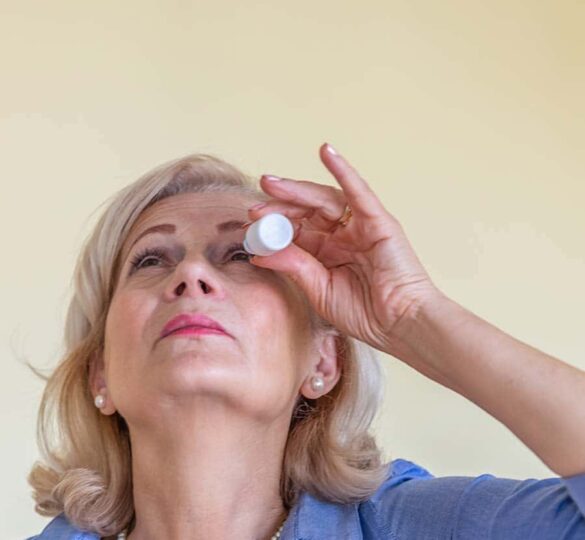Speak Up for Comfortable Glaucoma Drops
If you have side effects from a glaucoma medication, be sure to tell your doctor, who can adjust your treatment plan based on your needs.

Know the side effects, tell your doctor, and find well-tolerated options.
If you take eye drops for glaucoma, you can lower your pressure and feel comfortable at the same time. The key is to develop a close relationship with your doctor. Speak directly about what’s important to you. And if you have any side effects from a medication, don’t suffer in silence. Be sure to tell your doctor, who will make an individual treatment plan based on your needs, your goals, and which drops work best for you.
What to Watch For
Talk to your doctor if you have side effects from these common glaucoma eye drops:
- Alpha agonist (apraclonidine/Iopidine, brimonidine tartrate/Alphagan P) —Used for many years, these medications have few side effects. Over time, some people develop a sensitivity to these drops, causing redness, itching, and bumps on the inside of the eyelids. Other rare side effects are dry mouth, dry eyes, and fatigue.
- Beta blocker (betaxolol HCI/Betoptic S, levobunolol HCI/Betagan, metipranolol/OptiPranolol, timolol hemihydrate timolol/Betimol) – Some patients taking these medications develop breathing problems, a lower heart rate, or lower blood pressure, especially if they have a history of heart or respiratory disease. Patients who experience shortness of breath, dizziness, lightheadedness, or decreased exercise tolerance need to contact their eye doctor immediately.
- Carbonic anhydrase inhibitor (CAIs) (brinzolamide/Azopt, dorzolamide/Trusopt) —These drops can sting and burn when you put them in. They’re often avoided in people with a sulfa allergy.
- Prostaglandins (bimatoprost/Lumigan, latanoprost/Xalatan, latanoprostene bunod/Vyzulta, tafluprost/Zioptan, travoprost/Travatan Z) — Possible cosmetic side effects include increased eyelash growth, a “sunken eye” effect, darkened eye color (hazel or green eyes darkening to brown), and darkened skin around the eyes. These drops also may cause redness and irritation.
- Rho kinase inhibitor (netarsudil/Rhopressa) — These drops are fairly new, but so far, we know that they can cause redness and irritation, as well as deposits on the cornea that do not seem to affect vision.
Keep Using Your Drops — and See Your Doctor
Glaucoma is a chronic, progressive disease that can damage your optic nerve without any symptoms until very late in the disease, so you need to maintain your treatment no matter what. But you don’t need to live with uncomfortable side effects in most cases.
Most doctors will see you 3 to 6 weeks after starting a new medication to make sure the medication is working and is well tolerated. Report side effects to your doctor right away. If you have minor redness and irritation, your doctor might suggest sticking with it to see if your eyes adjust, but if they don’t, your doctor can offer alternatives.
Some changes are simple. For example, if you’re taking generic Brimonidine, the doctor might switch you to brand-name Brimonidine (Alphagan P), which is available in lower concentration with a different preservative and has fewer side effects in many patients. The doctor might also switch to a different class of medication. If you don’t like eye drops or don’t tolerate them, laser treatment or surgery might be right for you depending on your situation.
Your eye doctor will work with you to find the best solution. So keep using your medications, keep all your doctor appointments, communicate openly with your doctor, and keep a positive attitude because you can manage glaucoma comfortably.
Article by Houman Vosoghi, MD.
Posted on November 19, 2019; Last reviewed October 22, 2021.

Houman Vosoghi, MD
Dr. Houman Vosoghi is a glaucoma specialist at Dougherty Laser Vision in Los Angeles, California.